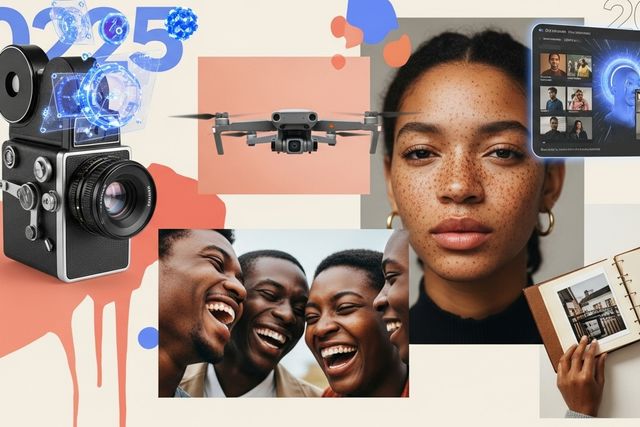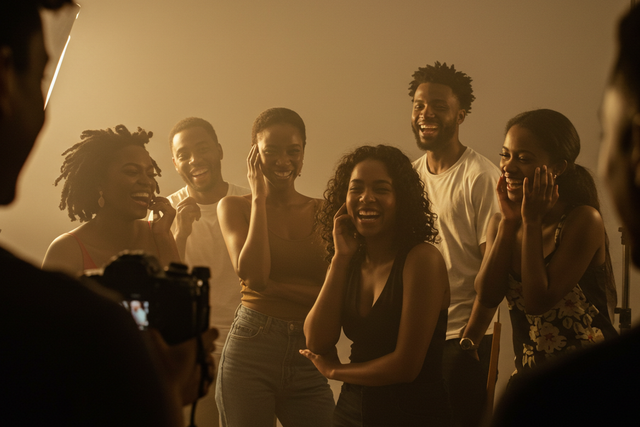
How to Direct Without Overwhelming Your Subject
Directing a photo shoot can be an art in itself. As a photographer, you might have a clear vision in mind, but you also need to keep your subject comfortable and natural in front of the camera. Balancing this vision with gentle, supportive guidance is key to bringing out the best in your subject without overwhelming them.
Let’s face it: most people don’t spend their days posing in front of a camera. When someone steps into the spotlight for a shoot, they can feel nervous or unsure. A good photographer understands this and knows how to bring out the best in their subject without pushing too hard. In this guide, we’ll dive into how to direct effectively without overwhelming, helping your subject feel at ease and resulting in relaxed, genuine photos.
Why Gentle Direction Matters
Why is it so important to be mindful about how you direct? Because photography is about capturing real people, real emotions, and real moments. If your subject feels anxious or confused by your instructions, that tension will show in the photos.
When you direct with empathy and ease, you allow your subject’s natural personality to shine through. You’re not just creating beautiful photos; you’re creating a comfortable experience, and that’s what leads to authentic results.
A shoot that feels relaxed and fun will naturally produce better photos. Your subject will feel seen and heard, which will help them trust you. And trust is everything when it comes to portrait photography.
1. Start with Small Talk and a Warm-Up
Imagine you’re meeting a friend for coffee. You don’t dive straight into serious conversation, right? You start with a warm greeting, maybe some small talk. This is exactly how you should begin your shoot.
Before diving into poses, start with a few minutes of light conversation. Ask about their day, talk about the weather, or make a comment on something you noticed about the location. Your goal here is to break the ice and make your subject feel comfortable around you.
Example Icebreakers:
- “What made you decide to get these photos done?”
- “Any fun plans after the shoot?”
- “Do you have any favourite photos of yourself? What do you like about them?”
Small talk works wonders to relax the atmosphere, and it gives you insights into their personality, which can help shape the mood of the shoot. You’re essentially telling them, “This isn’t going to be stressful or formal. We’re just going to have a good time and capture some great moments along the way.”
2. Start with Simple, Natural Poses
Now that they’re a bit more comfortable, begin with simple, natural poses. Start with directions that feel intuitive, like asking them to stand or sit naturally or lean against something. This approach helps them feel at ease, and it won’t feel like they’re jumping right into intense, staged poses.
For instance, you could ask them to:
- Stand casually with one hand in their pocket
- Cross their arms and look off to the side
- Sit down with one knee propped up
These simple positions give you a foundation and time to observe how they move. Plus, these natural poses make the transition to more directed shots feel less jarring.
Pro Tip: Show them a Pose
If your subject seems uncertain, demonstrate the pose yourself. Not only does this help them understand your vision, but it also shows that you’re right there with them, helping them feel less self-conscious.
3. Use Verbal and Visual Cues Sparingly
When directing your subject, keep your cues clear and straightforward. Using too many words or complicated instructions can overwhelm someone quickly. Imagine trying to pose for a photo while being told to angle your chin, tilt your head, adjust your shoulders, and squint just a little; it’s exhausting!
Instead, break down your instructions and focus on one adjustment at a time. For example:
- “Can you turn your shoulder slightly towards me?”
- “Now, bring your chin down just a touch. Perfect.”
- “Let’s try a soft smile. Great!”
Another technique is using visual cues. Say things like, “Imagine you’re looking at something you love” or “Think about the last time you laughed.” These suggestions bring out genuine expressions, making your subject feel like they’re in a moment, not a pose.
If they look unsure, step in and make small adjustments, like tilting their head or angling their body. You’re guiding them gently while keeping the energy calm and positive.
4. Encourage Movement and Natural Expression
Static poses can look stiff, so encouraging your subject to move or try natural expressions can bring a whole new level of life to your shots. Think about how much personality shines through when someone laughs or lets out a little smirk. These small movements and shifts can completely change the vibe of a photo.
Here are some prompts to encourage natural movement:
- “Let’s try a little spin. Give me a twirl and look over your shoulder as you do.”
- “Take a few steps towards me, and let’s go for a walk together.”
- “Imagine you’re talking to a friend; what’s something that always makes you laugh?”
Movement can also ease tension. When your subject is focused on something physical, like walking, they’re less likely to overthink their facial expression or posture.
5. Make it Collaborative
Your subject isn’t just a model; they’re a collaborator in creating this art. Involve them in the process, and invite their ideas and feedback. This turns a one-sided shoot into a shared experience and helps them feel valued.
- Ask for Input: “Are there any poses or angles you love?”
- Incorporate Their Ideas: “How about we try that pose you mentioned?”
- Use Their Body Language: If they seem comfortable in a certain position, work with that instead of forcing something unnatural.
When your subject has a say, they feel more confident and relaxed. Collaboration makes them feel like part of the creative process, which results in more genuine photos.
6. Pay Attention to Their Comfort
Body language can tell you a lot. If your subject starts shifting uncomfortably, fidgeting, or looking uncertain, take note; it may be a sign they’re not at ease with the pose. Pay attention to these cues, and if you sense discomfort, ease up in that direction.
If they’re feeling tense, take a break. Chat for a moment, compliment them on how great the shots are looking, and maybe even show them a sneak peek of the photos so far. Letting them see their own progress can be hugely reassuring.
Sometimes, a small adjustment can make all the difference, so listen to their comfort level and make changes as needed.
7. End on a High Note with Fun Shots
The end of the shoot is a perfect time to loosen up. By now, they’ll be more comfortable and may even have enjoyed the session! This is when you can encourage a few “just for fun” shots. Ask them to do something spontaneous or silly, like jump in the air or throw their arms up.
These end-of-shoot shots often turn out to be some of the best. They capture your subject feeling relaxed and happy, giving you genuine, joyful photos that resonate. Ending the shoot on this positive note makes the whole experience feel enjoyable, leaving your subject with good memories and a desire to work with you again in the future.
Final Thoughts: Mastering the Art of Gentle Direction
Directing without overwhelming your subject is about finding the perfect balance between guiding and letting go. The aim is to capture moments that feel real, full of personality, and truly reflective of the person you’re photographing.
Remember:
- Start with small talk and a warm-up to ease into things.
- Use simple, natural poses that feel comfortable.
- Give clear, manageable instructions and avoid overloading them with too many details.
- Encourage movement to bring out natural expression.
- Make them a collaborator and involve them in the process.
- Pay attention to their body language and adjust for comfort.
- End on a fun note to wrap up the session with joy and energy.
By creating an experience that’s comfortable, positive, and collaborative, you’ll capture genuine expressions and moments that make your photos stand out. With practice, these techniques become second nature, and you’ll find that every subject feels more like a friend than a model. And that’s when the magic happens, when your photos stop being just images and start becoming stories.
Anonymous
Related Posts

2025 Photography Trends That Will Make You Grab Your Camera
Okay, confession time: I almost cried when a teenager asked me not to edit out her freckles. That's when I knew 2025's photography trends were something special. This isn't just about new techniques - it's about falling back in love with what makes us human.

How to Pose Naturally for Photos (No Awkward Smiles, I Promise!)
Ever stood frozen in front of a camera, smiling so hard your cheeks hurt? Let’s fix that – natural posing isn’t about perfect angles, but about moving like nobody’s watching (even when they totally are).